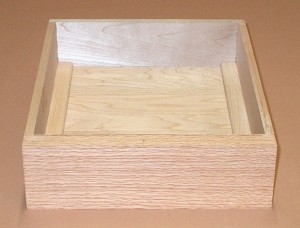Antique furniture drawers always involved wooden drawer sides sliding on wooden runners. On better furniture, drawers were custom fit to their openings with even, tight gaps. But with use, the drawer runners and bottoms of the drawer sides would wear Eventually the wear was so great that there would no longer be even gaps around the drawer front.
A solution developed in England and/or France was to glue a second strip of wood to the inside bottom edge of the drawer sides. This creates a wider bearing surface that wears more slowly. A second advantage of drawer slips is that the drawer sides could be made more narrow, adding elegance and a sense of lightness to the drawer. A third advantage is that the inside of the drawer has much more visual interest. Three types of slips were used, the quadrant pictured here, a cove, and a flush with delicate scratch bead along the drawer bottom. Sample drawers with quadrant and flush slips are maintained at my workshop if you’d like to see them first-hand.
It’s a mystery why furniture makers emigrating from those countries to the United States did not incorporate drawer slips in furniture made here. I like to include them for all of the stated advantages.
More information on drawer slips can be found at www.stephanwoodworking.com/DrawerSlips.htm

